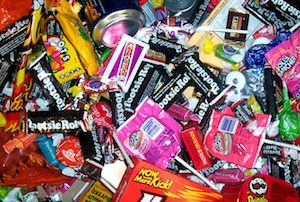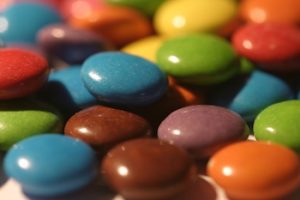 Guest post by Jennifer Markowitz, MS, RD, Clinical Dietitian in the Nutrition Department at The Mount Sinai Hospital.
Guest post by Jennifer Markowitz, MS, RD, Clinical Dietitian in the Nutrition Department at The Mount Sinai Hospital.
When I was in graduate school, I taught a nutrition science curriculum to local fifth graders that focused on how they could make choices to feel their best. As the children learned about the interplay between food and their bodies, they set goals to develop healthier habits. Most students loved working towards their goals. They would start each lesson with anecdotes about the broccoli they tried at lunch or the marathon tag session they started after school. They did not mind sacrificing some of the not-so-healthy foods they were used to eating in favor of enjoying the pride that came with accomplishing their goals.
These generally gung-ho attitudes shifted, however, when the conclusion of a lesson about cutting  back on processed sugar coincided with Halloween. The students’ eyes widened as they realized candy fell into the category of foods they were now seeking to limit. We discussed solutions that would allow them to still enjoy Halloween loot without deviating too far from their goals, but many could not shake the idea that prioritizing their health conflicted with the essence of Halloween.
back on processed sugar coincided with Halloween. The students’ eyes widened as they realized candy fell into the category of foods they were now seeking to limit. We discussed solutions that would allow them to still enjoy Halloween loot without deviating too far from their goals, but many could not shake the idea that prioritizing their health conflicted with the essence of Halloween.
Halloween is virtually indistinguishable from candy. The students I worked with were used to beginning the holiday with food-centric festivities in school, and ending the day on a mission to obtain as much sugar from their neighbors as possible. There was no alternative to these activities in their minds.
Interestingly, a 2003 study conducted by the Yale University Center for Eating and Weight Disorders found that when offered a choice between candy and toys on Halloween, children ages 3-14 were equally as likely to select toys as they were the conventional Halloween fare. This suggests that, contrary to popular belief, the true appeal for trick-or-treaters may be simply obtaining a treat – sugary or not. Satisfaction is derived from receiving something fun, not the treat itself. The study proposed that replacing sugary and high-calorie foods with non-food items on special occasions may make them seem less special and may possibly make them less desired over time.
While a Halloween without candy is hard to imagine, detaching unhealthy foods from their status as treats is a step in the right direction. Food is too often treated as a reward when equally suitable alternatives exist. Many of us feel the need to indulge in a heaping bowl of mac-n-cheese after a rough day, or enjoy an ice cream sundae following a child’s baseball win. When faced with this urge, consider alternatives to food rewards that can be just as effective in providing comfort and happiness. Aim to change expectations in a productive way, so that – like my enthusiastic fifth graders – we can always feel our best.
